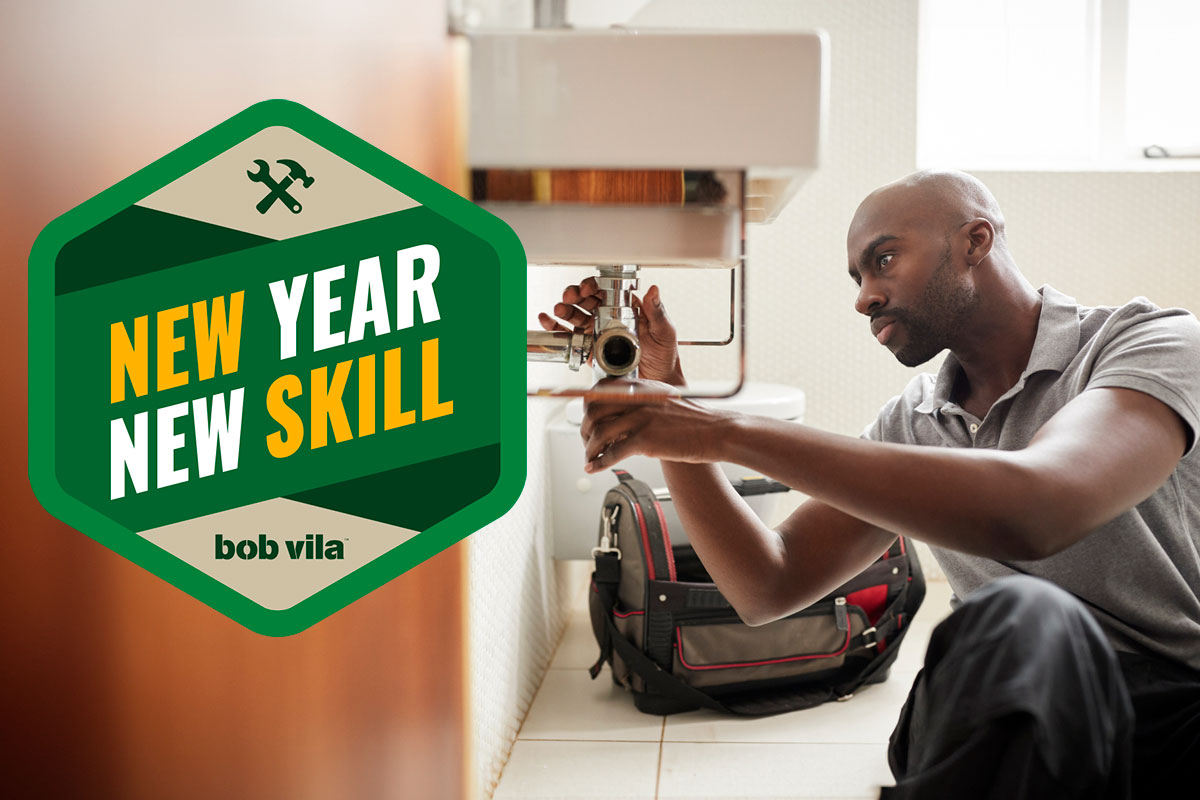We may earn revenue from the products available on this page and participate in affiliate programs. Learn More ›
Plumbing is a key component in any modern home, playing an important part in delivering clean water to the property and also removing waste and wastewater. Cold and hot water lines run throughout the house to ensure that each faucet, shower, tub, and water-using appliance has direct access to clean water. Drainage lines also connect to these fixtures to efficiently dispose of dirty water and waste.
While plumbing systems may seem daunting at first glance, there are actually a wide range of plumbing jobs that can be completed by an eager-to-learn DIYer with a little patience, a little skill, and the right tools. Bob Vila’s collection of guides and how-to articles can help guide you toward becoming your own plumber, so you won’t need to call in the pros for every repair, maintenance task, or upgrade.
The first step in DIY plumbing is to put together a tool kit, then inspect the plumbing system to determine where all the critical parts are located around the home, including the primary shut-off valve, water heater, main drain stack, and more. It’s also worth noting that some homes may have additional plumbing components, like an irrigation system or boiler, though whether these add-ons are present or not varies between properties.
Tackle minor plumbing jobs when you first get started in order to become more comfortable with the plumbing system. Unclog the toilet, snake the drain, replace the shower head, or even repair a running toilet to practice your plumbing skills while maintaining and updating the home. Rely on informative how-to articles and detailed DIY guides like this one to learn how to be your own plumber.
Tools of the Trade
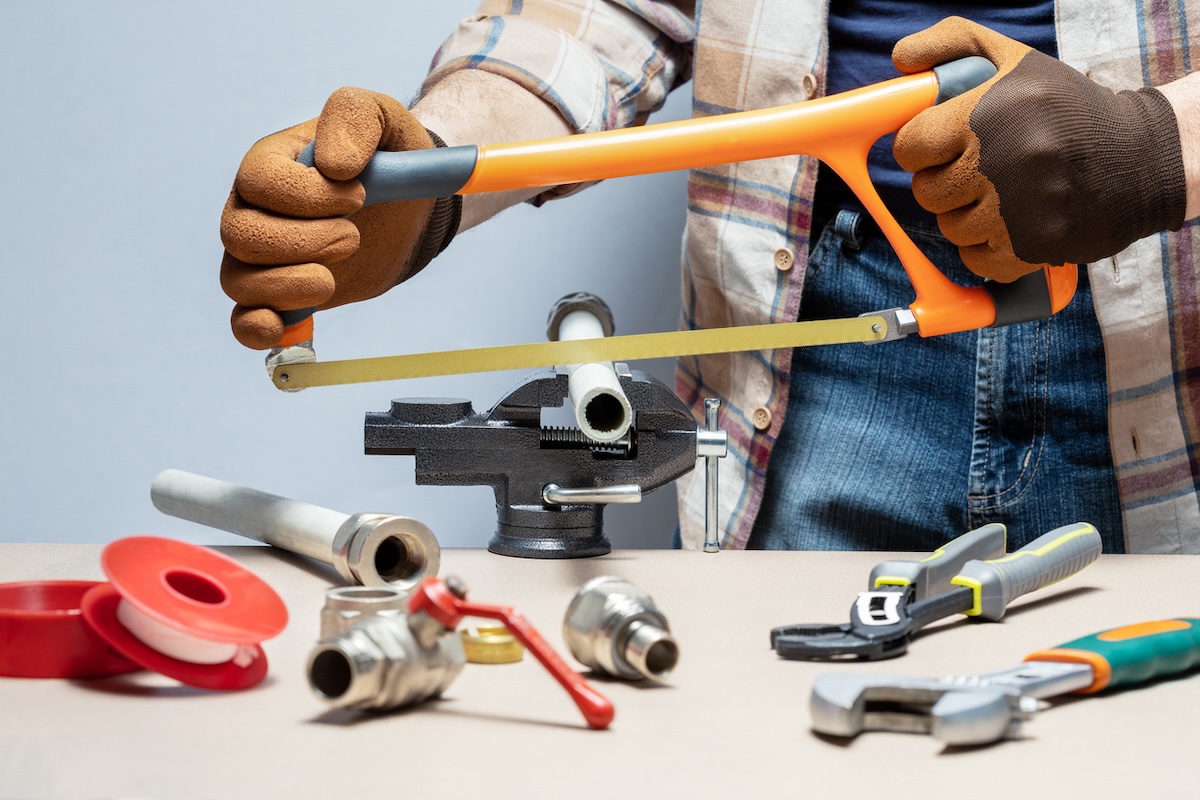
Before starting any plumbing jobs around the home, it’s necessary to gather several important tools. Without the right equipment, plumbing repairs and upgrades can be significantly more difficult to complete. Generally, DIY plumbers will use plungers, drain snakes, and Channellock pliers more than any other tools because they are required to complete the majority of simple household plumbing tasks.
However, as your skills as a DIY plumber improve, you may decide to take on more complex plumbing projects, like fixing a leaky pipe, resolving low water pressure problems, or even replacing a shut-off valve. These jobs typically require a broader assortment of plumbing tools and supplies, such as a hacksaw, torch, or drain auger. Make sure your tool kit includes the following tools of the trade to help handle DIY plumbing projects on the way to becoming your own plumber.
- Hacksaw: Used to cut through metal pipes, including lead, galvanized iron, and copper. A hacksaw can also be used to cut bolts or remove seized fasteners.
- Pipe Cutters: Designed to cut through plastic and metal pipes. Pipe cutters can be adjustable or they may be made specifically for one size of pipe.
- Torch: For those that are comfortable soldering copper pipe, a blow torch is a key component of a DIY plumbing kit. Sweat copper fittings, solder new connections, and repair leaks.
- Drain Snake: Remove hair, soap scum, and other debris that may have gotten trapped in the sink or shower drain.
- Drain Auger: The long cable and unique head allow this tool to reach deep into the drainage system to break up or pull out clogs.
- Channellock Pliers: Grab, twist, pull, or hold fittings, nuts, bolts, and more with a set of Channellock pliers.
- Pipe Wrench: The teeth of a pipe wrench bite into the metal to grip rounded nuts and pipes. Add a second pipe wrench to hold the pipe while using the other to rotate the fitting.
- Plunger: Unclog the toilet quickly with a plunger, or use this tool to help clear minor clogs in the sink, shower drain, or tub.
Sinks and Faucets
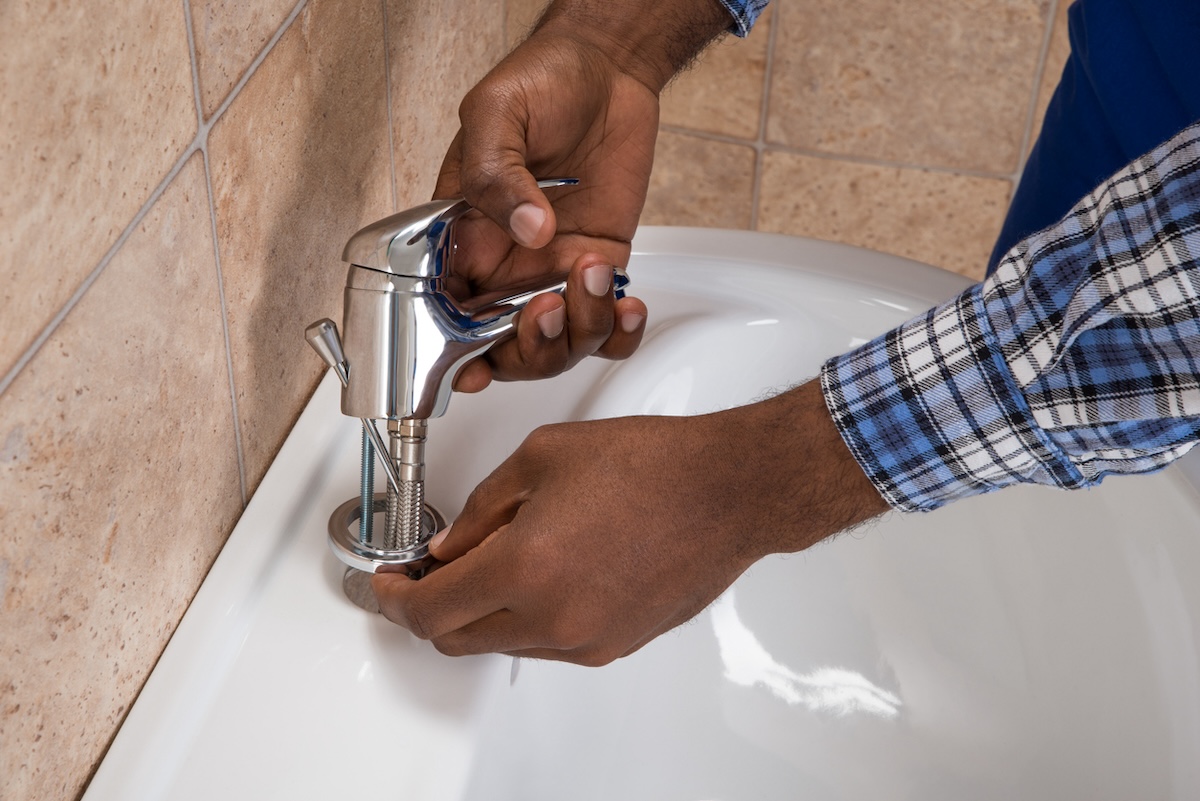
Among the most common DIY plumbing jobs are replacing a faucet, repairing a sink stopper, and unclogging a sink. Beginners can start with simple tasks like cleaning out a faucet aerator by carefully removing the aerator from the faucet, rinsing out debris, soaking the aerator in a vinegar cleaning solution, then reinstalling the aerator.
The following guides provide informative, step-by-step instructions for how to accomplish each plumbing task from beginning to end. You’ll also learn what products are safe to use for clearing clogs, as well as how to troubleshoot problems with sinks or faucets to keep the home running efficiently.
MORE ON SINKS AND FAUCETS:
➤ How to Clean a Faucet Aerator
➤ Troubleshooting a Slow Sink Drain
➤ How to Replace a Faucet
➤ Repair a Bathroom Sink Stopper Step by Step
➤ How to Fix a Leaky Faucet
➤ 9 Drano Alternatives for Clearing Clogs
Toilets
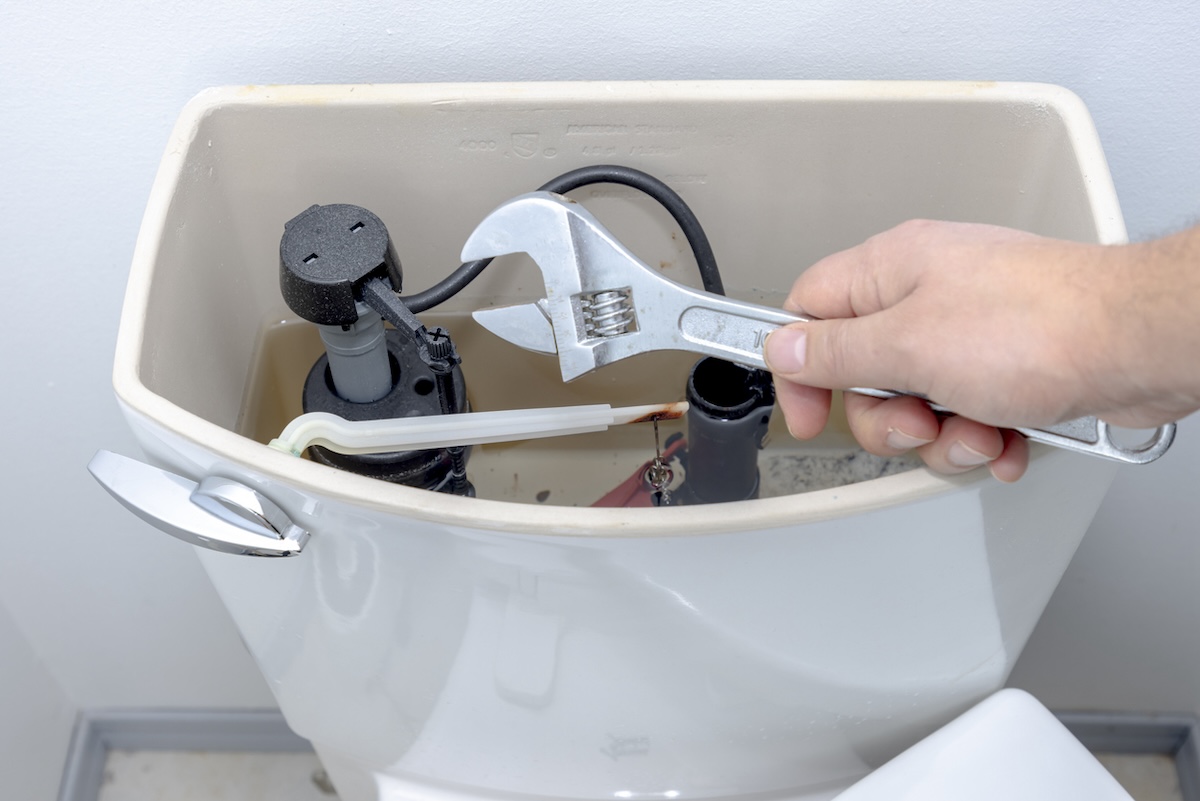
Clogged toilets are so common that most households will have a plunger nearby, just in case someone uses too much toilet paper, causing the toilet to back up and overflow. However, DIY plumbers should also learn how to troubleshoot a running toilet, replace a flush valve, and repair a fill valve to ensure that the toilet continues to function properly without wasting water.
Check out the list of helpful how-to guides and educational articles below to learn more about how a toilet works, what components can be repaired, and what parts of the toilet should be replaced when a problem arises. Plus, peruse some of the most efficient toilet options available today in case you were thinking about upgrading one or more of the bathrooms in the house.
MORE ON TOILETS:
➤ How to Unclog a Toilet Without a Plunger
➤ What to Do When Your Toilet Gurgles
➤ How to Replace a Toilet Seat
➤ Troubleshooting a Toilet That Won’t Flush
➤ How to Replace a Toilet Fill Valve
➤ The Best Dual-Flush Toilets for the Bathroom
Showers and Bathtubs
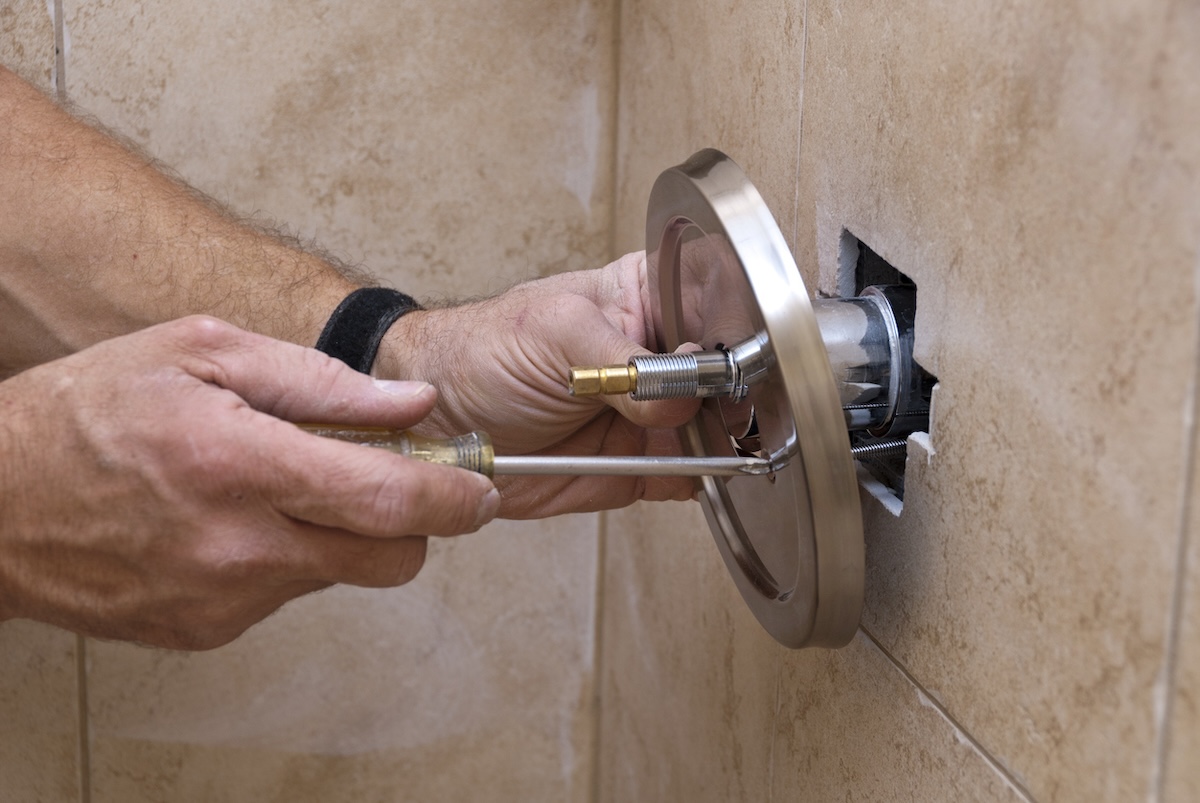
Showers and bathtubs are essential additions to any home, providing a waterproof retreat to wash away the dirt, sweat, and grime of the day. Don’t settle for low-pressure showers, slow draining tubs, and leaking faucets when DIY plumbers can learn how to replace a shower head, reseal a tub, unclog the drain, install a new shower valve, and more.
The articles below can help you become your own plumber by providing detailed step-by-step instructions to complete a variety of shower and bathtub maintenance and repair jobs. Find information on different repair methods and learn how to troubleshoot difficult issues to determine the cause and fix the problem.
MORE ON TUBS AND SHOWERS:
➤ 3 Methods for Unclogging a Shower Drain
➤ How to Fix a Leaking Shower Head
➤ 8 Surefire Ways to Increase Water Pressure
➤ How to Replace a Shower Valve
➤ The Best Water-Saving Shower Heads
➤ How to Caulk a Shower or Tub Properly
Appliances
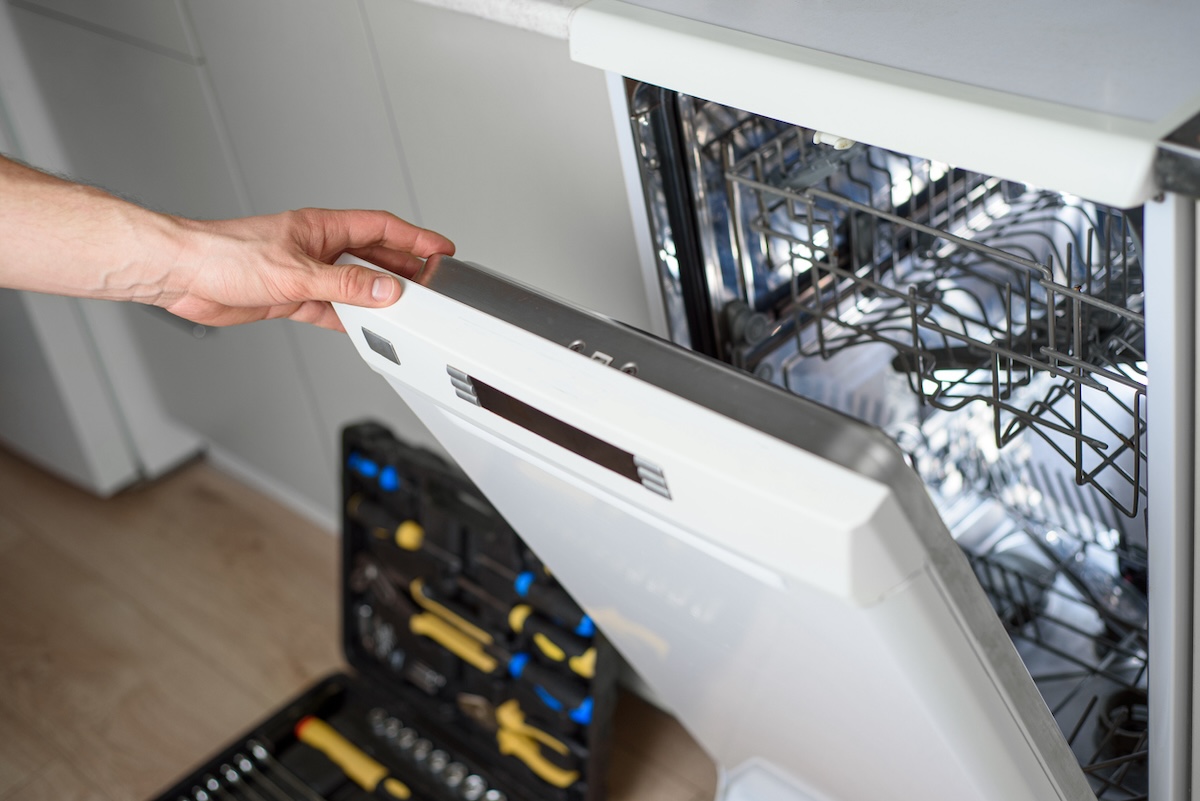
Water-using appliances, like dishwashers, clothes washers, and water heaters, should be properly maintained to ensure they operate efficiently and last as long as possible before needing to be replaced. This can include flushing a water heater, replacing the hoses on a dishwasher, or fixing a hot water inlet valve to prevent it from leaking behind the clothes washer.
Bob Vila’s tutorials about garbage disposals, dishwashers, and more can help you tackle simple plumbing repairs and maintenance tasks around the house. Discover how to troubleshoot appliance issues, make DIY repairs, or complete full replacement projects without needing to call a professional plumber.
MORE ON PLUMBING APPLIANCES:
➤ What to Do When Your Dishwasher Is Not Draining
➤ How to Install a Garbage Disposal
➤ Anode Rod Replacement Step by Step
➤ How to Fix a Leaking Water Heater
➤ What to Do When Your Washing Machine Won’t Fill
➤ How to Fix Water Hammer

